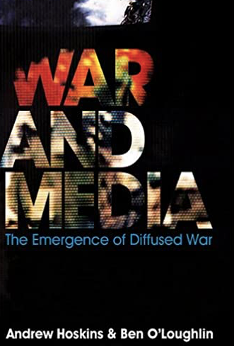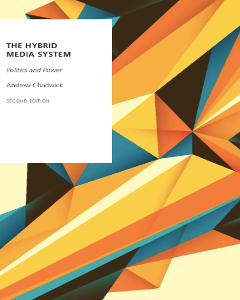Reading List for MA Media And International Conflict
There is no single textbook that covers the range and focus of the MA in Media and International Conflict, but the books below - on the intersections of conflict, news media, political communications and international affairs - are all useful introductory readings.
Hoskins, Andrew, and Ben O’Loughlin, War and Media : The Emergence of Diffused War (Polity Press, 2010)
The conventions of so-called traditional warfare have been splintered by the availability and connectivity of the principal locus of war today: the electronic and digital media. This study identifies and illuminates the conditions of "diffused war" and the new challenges it raises for the actors who wage and counter warfare, for their agents and mechanisms of the new media and for mass publics.
Simon Cottle, Mediatized ConflictMediatized Conflict(McGraw-Hill, 2006)
This book explores the powered dynamics, contested representations and consequences of media conflict reporting. It examines how the media today do not simply report or represent diverse situations of conflict, but actively 'enact' and 'perform' them.
Piers Robinson, Philip M. Seib and Romy Fröhlich, eds., Routledge Handbook of Media, Conflict and Security
(Routledge, 2016)
This handbook examines the impact the media has on governments pursuing war, responses to humanitarian crises and violent political struggles, and the role of the media as a facilitator of, and a threat to, both peace building and conflict prevention. It links the body of conflict and media studies with work in security studies.
B. Nacos, Mass-mediated Terrorism: Mainstream and Digital Media in Terrorism and Counterterrorism
(Rowman & Littlefield, 2016)
This volume examines how terrorists exploit mass media, including social media, to get attention, spread fear and anxiety among the targets of violence, and threaten further attacks. It will help readers to understand the centrality of media considerations in both terrorism and counterterrorism.
Kate Kenski and Kathleen Hall Jamieson, eds., The Oxford Handbook of Political Communication, eds.
(Oxford University Press, 2017)
A broad-based overview of political communication, addressing: contexts for viewing the field of political communication, political discourse, media and political communication, interpersonal and small group political communication, and the altered political communication landscape.
Greg McLaughlin, The War Correspondent
(Pluto, 2016)
Looks at the role of the war reporter today: the challenge of objectivity and impartiality in the war zone; the danger that journalistic independence is being compromised by military control, censorship and public relations; as well as the commercial and technological pressures of an intensely concentrated, competitive news media environment.
Andrew Chadwick, The Hybrid Media System
(Oxford University Press, 2017)
Explains how political communication is increasingly shaped by interactions among older and newer media logics. Organizations, groups, and individuals in this system are linked by complex and ever-evolving relationships based on adaptation and interdependence.
David Patrikarakos , War in 140 Characters: How Social Media is Reshaping Conflict in the Twenty-First Century
(Basic Books, 2017)
Explores how social media is shifting the power balance from governments and institutions towards individuals and networks and the impact this is having on contemporary warfare. Relating the personal stories of individuals caught up in conflict, this book underscores the centrality of narratives and storytelling to understanding the changing face of war today.








